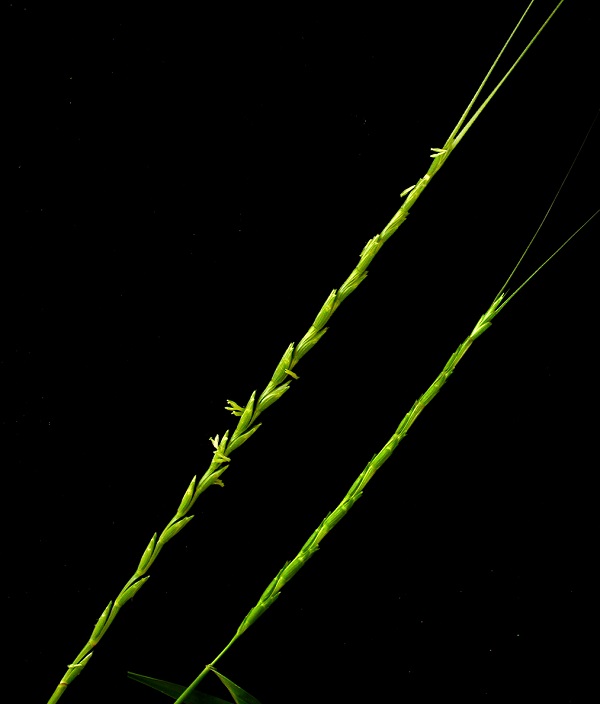The influence of soil types and fertilizers on growth parameters of three goatgrass species (Aegilops) from the coastal plains of Israel: A. sharonensis Eig, A. longissima Schwienf. et Muschl. and A. speltoides Tausch
DOI:
https://doi.org/10.14719/pst.1757Keywords:
Bucket-study, Ecosystem, Groundwater, Sand, Dunes, Urbanization, Goatgrass, Spikes, DistributionAbstract
Three species of goatgrass (Aegilops L.), the wild relative of wheat, grow naturally in the coastal plains of Israel. The distribution and ecological parameters of Aegilops sharonensis were determined by a field survey, while similar information on the other species was obtained from the BioGIS database. The distribution of plants was soil-specific. Sharon goatgrass (A. sharonensis Eig) is endemic to Israel and southern Lebanon's coastal plains, which have been stabilized with dunes and sandy soils. In contrast, slender goatgrass (A. longissima Schwienf. et Muschl.) grows mainly on sandy loam and the truncate goatgrass (A. speltoides Tausch) grows primarily on heavy alluvial soils. The present 4-month study evaluated the affinity between these 3 Aegilops species, the 3 different types of soils and fertilizer application, in buckets. Interestingly, a significant increase in the number and weight of the spikes were observed in fertilized buckets. We could also find that these 3 species preferred heavy alluvial soil over the sands, regardless of the fertilizer treatment. The data suggested that the population of A. sharonensis was limited to the sandy dunes by urbanization along the coastal plane and aggressive competition with the other species. Their more extended root system may adapt A. sharonensis to the deep and salty groundwater that characterizes dunes. It is suggested to keep representatives of the Israeli Aegilops populations in a nature reserve for protection from extinction.
Downloads
References
Waisel Y, Litav M, Agami M. Coastal Plants of Israel. Division of Ecology Ltd., Tel Aviv; (in Hebrew). 1975.
Kilian B, Mammen K, Millet E, Sharma R, Graner A, Salamini F et al. In: Wild crop relatives: Genomic and Breeding Resources. Berlin, Heidelberg: Springer. 2010; 1-76. doi 10.1007/978-3-642-14228-4_1.
Sela H, Ezrati S, Olivera PD. Genetic diversity of three Israeli wild relatives of wheat from the Sitopsis section of Aegilops. Israel Journal of Plant Sciences. 2018;65(3-4):161-74. https://doi.org/10.1163/22238980-00001059
Millet E, Agami M, Ezrati S, Manisterski J, Anikster Y. Distribution of Sharon goatgrass (Aegilops sharonensis Eig) in Israel. Israel Journal of Plant Sciences. 2006;54: 243-48. doi.org/10.1163/22238980-00001059.
Ostrowski MF, Prosperi JM, David J. Potential implications of climate change on Aegilops species distribution: sympatry of these crop wild relatives with the major European crop Triticum aestivum and conservation issues. PloS one. 2016; 11(4): e0153974. doi:10.1371/journal.pone.0153974.
Kushnir U, Halloran GM. Evidence for Aegilops sharonensis Eig as the donor of the B genome of wheat. Genetics. 1981;99(3-4): 495-512. doi-org.ezproxy.haifa.ac.il/10.1093/genetics/99.3-4.495.
Olivera PD, Anikster Y, Steffenson BJ. Genetic diversity and population structure in Aegilops sharonensis. Crop Science. 2010; 50(2): 636-48. doi: 10.2135/cropsci2009.04.0192. doi:10.1111/1462-2920.14530.
Llorens E, Sharon O, Camañes G, García?Agustín P, Sharon A. Endophytes from wild cereals protect wheat plants from drought by alteration of physiological responses of the plants to water stress. Environmental Microbiology. 2019;21(9):3299-312. doi:10.1111/1462-2920.14530.
Ankori H, Zohary D. Natural hybridization between Aegilops sharonensis and Ae. longissima: a morphological and cytological study. Cytologia. 1962;27(3):314-24?. doi.org/10.1508/cytologia.27.314.
BioGIS Database of Israeli flora and fauna website: http:/www.biogis.huji.ac.il/biogis/static/he/index.html.
Pradhan GP, Prasad PVV, Fritz AK, Kirkham MB, Gill BS. High temperature tolerance in Aegilops species and its potential transfer to wheat. Crop Science. 2012; 52(1): 292-304. doi-org.ezproxy.haifa.ac.il/10.2135/cropsci2011.04.0186.
Fang F, Zhang C, Wei S, Huang H, Liu, W. Factors affecting Tausch's goatgrass (Aegilops tauschii Coss.) seed germination and seedling emergence. Journal of Agricultural Science. 2012;4(1):114-21. doi.org/10.5539/jas.v4n1p114.
Young FL, Yenish JP, Walenta DL, Ball DA, Alldrege JR. Spring-germinating jointed goatgrass (Aegilops cylindrica) produces viable spikelets in spring-seeded wheat. Weed Science. 2003;51(3):379-85. doi.org/10.1614/0043-1745(2003)051[0379:SJGACP]2.0.CO;2.
Batten KM, Scow KM, Davies KF, Harrison SP. Two invasive plants alter soil microbial community composition in serpentine grasslands. Biological Invasions. 2006;8(2):217-30. DOI 10.1007/s10530-004-3856-8.

Downloads
Published
How to Cite
Issue
Section
License
Copyright (c) 2022 Moshe Agami, Yehoshua Anikster , Amir Neori

This work is licensed under a Creative Commons Attribution 4.0 International License.
Copyright and Licence details of published articles
Authors who publish with this journal agree to the following terms:
- Authors retain copyright and grant the journal right of first publication with the work simultaneously licensed under a Creative Commons Attribution License that allows others to share the work with an acknowledgement of the work's authorship and initial publication in this journal.
- Authors are able to enter into separate, additional contractual arrangements for the non-exclusive distribution of the journal's published version of the work (e.g., post it to an institutional repository or publish it in a book), with an acknowledgement of its initial publication in this journal.
Open Access Policy
Plant Science Today is an open access journal. There is no registration required to read any article. All published articles are distributed under the terms of the Creative Commons Attribution License (CC Attribution 4.0), which permits unrestricted use, distribution, and reproduction in any medium, provided the original author and source are credited (https://creativecommons.org/licenses/by/4.0/). Authors are permitted and encouraged to post their work online (e.g., in institutional repositories or on their website) prior to and during the submission process, as it can lead to productive exchanges, as well as earlier and greater citation of published work (See The Effect of Open Access).








